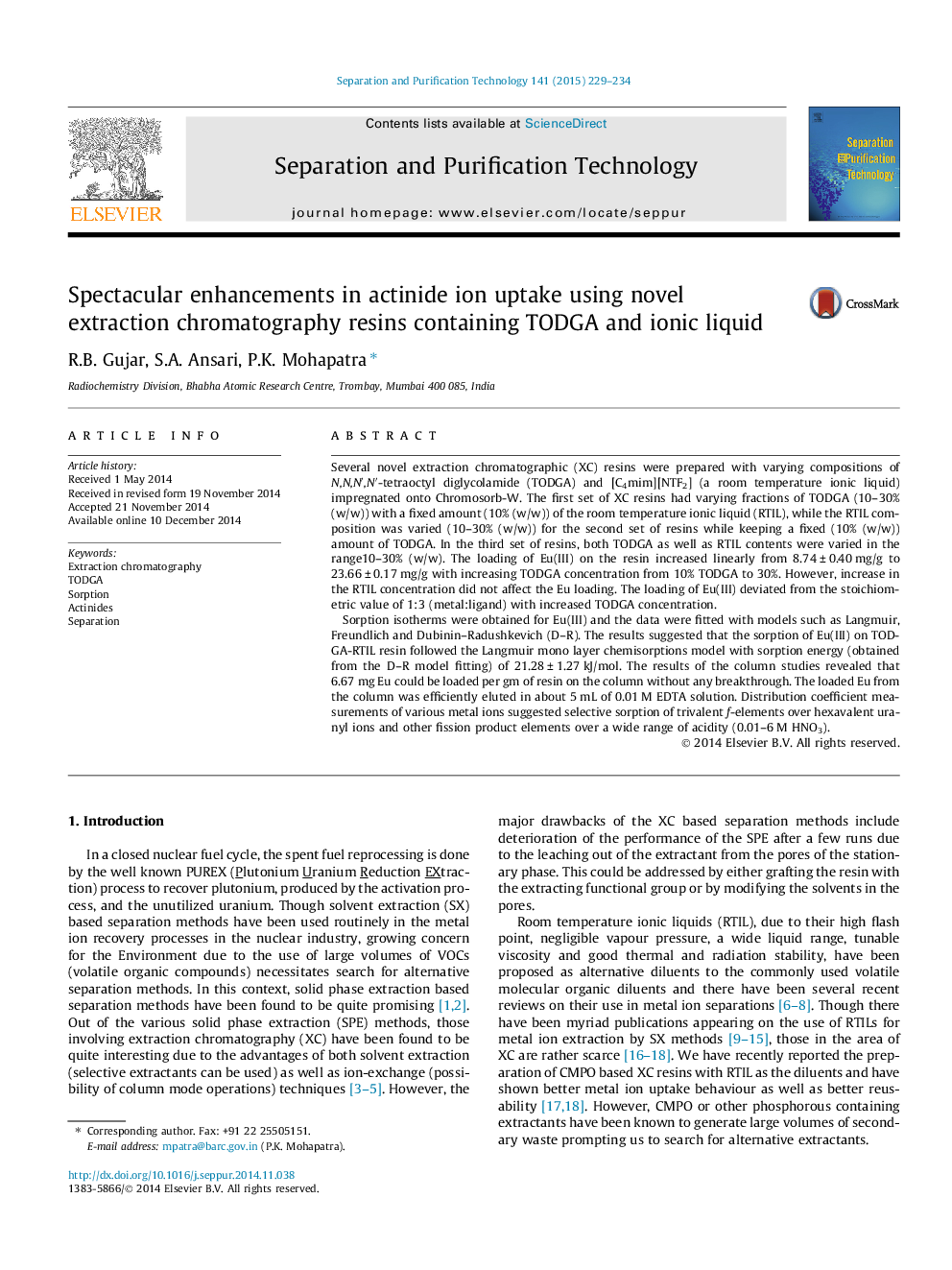| Article ID | Journal | Published Year | Pages | File Type |
|---|---|---|---|---|
| 640676 | Separation and Purification Technology | 2015 | 6 Pages |
•Extraction chromatographic resins containing TODGA in a RTIL were made.•The coated resin beads were used for actinide ion extraction from acidic feeds.•Spectacular enhancements in metal ion uptake were seen.•Adsorption isotherm studies were carried out.•Column mode operations were also tested for possible applications.
Several novel extraction chromatographic (XC) resins were prepared with varying compositions of N,N,N′,N′-tetraoctyl diglycolamide (TODGA) and [C4mim][NTF2] (a room temperature ionic liquid) impregnated onto Chromosorb-W. The first set of XC resins had varying fractions of TODGA (10–30% (w/w)) with a fixed amount (10% (w/w)) of the room temperature ionic liquid (RTIL), while the RTIL composition was varied (10–30% (w/w)) for the second set of resins while keeping a fixed (10% (w/w)) amount of TODGA. In the third set of resins, both TODGA as well as RTIL contents were varied in the range10–30% (w/w). The loading of Eu(III) on the resin increased linearly from 8.74 ± 0.40 mg/g to 23.66 ± 0.17 mg/g with increasing TODGA concentration from 10% TODGA to 30%. However, increase in the RTIL concentration did not affect the Eu loading. The loading of Eu(III) deviated from the stoichiometric value of 1:3 (metal:ligand) with increased TODGA concentration.Sorption isotherms were obtained for Eu(III) and the data were fitted with models such as Langmuir, Freundlich and Dubinin–Radushkevich (D–R). The results suggested that the sorption of Eu(III) on TODGA-RTIL resin followed the Langmuir mono layer chemisorptions model with sorption energy (obtained from the D–R model fitting) of 21.28 ± 1.27 kJ/mol. The results of the column studies revealed that 6.67 mg Eu could be loaded per gm of resin on the column without any breakthrough. The loaded Eu from the column was efficiently eluted in about 5 mL of 0.01 M EDTA solution. Distribution coefficient measurements of various metal ions suggested selective sorption of trivalent f-elements over hexavalent uranyl ions and other fission product elements over a wide range of acidity (0.01–6 M HNO3).
